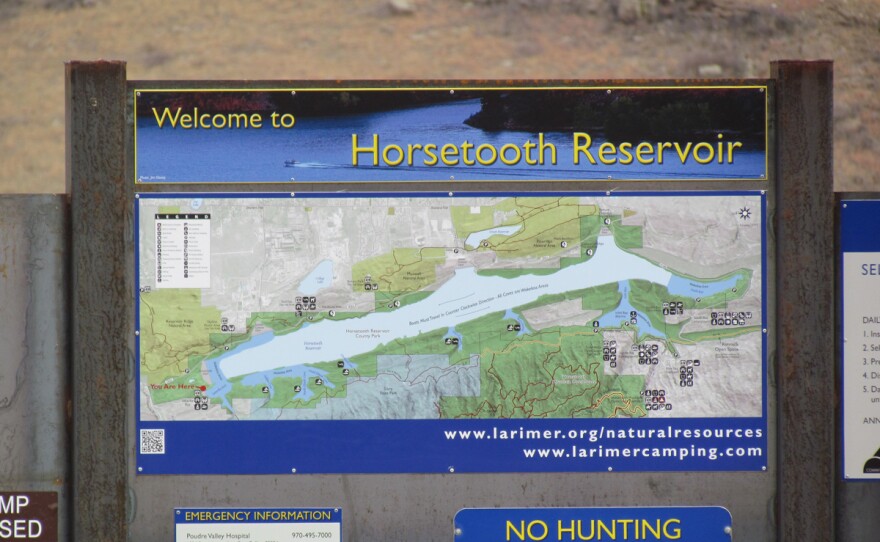Normally you would need a paddle to get to the middle of Horestooth Reservoir just west of Fort Collins. Right now you can almost walk there; the reservoir is only 40 percent full.
Horsetooth isn’t alone. Reservoir levels are dwindling around the state and Colorado’s water managers are hoping for good to average snowfall this season to replenish them. Forecast models are still unclear as to how much snow may fall. With drought conditions likely to last into early 2013, water managers in Northern Colorado remain cautiously optimistic.

The drought’s impact on Horsetooth has been dramatic. Along the shoreline, the normally submerged concrete boat ramp clearly stands out. The dirt where the water line should be is cracked and muddy.
Early data released November 4th shows reservoirs statewide at 43 percent capacity. Normally they should be at 61 percent.
Despite the seemingly dire levels at Horsetooth, Northern Colorado’s supply going into next year remains in better shape than during 2002's massive drought.
“Why we were in much worse shape than now is because that drought started in 1999. So we had ‘99, 2000, 2001 before we hit 2002 with bad water years. So we were going into ’02, which was the worst year we’ve ever had on record, in not a very good place,” says Northern Water’s Brian Werner.
Uncertain Forecast Models

Werner says this 2012 was tolerable because the state was coming off a wet year. Without an average snow season, the pattern that led to 2002 could repeat itself. Right now the snow pack is currently just 38 percent of average.
The forecast models aren’t looking that good to state climatologist Nolen Doesken. “In terms of what these next few months will hold, the weather patterns haven’t shed their clues very well.”
Doesken says an average winter would go a long way in bringing reservoir levels back to normal in Northern Colorado. There’s a bit of a caveat as you would imagine.
“What happens in the spring has such a bearing on our situation. And this past spring, 2012, we saw that in action when the springs storms fail to materialize. Because its spring storms at lower elevations that replenish soil moisture and get the vegetation off to a good start which will reduce the need for spring irrigation. And it won’t put that pressure on the reservoirs.”
If 2013 Is Bad, What About 2014?
Clearly there are a lot of “what ifs” right now when it comes to forecasting both the weather and Colorado’s water outlook for 2013.
Northern Water’s Brian Werner isn’t too concerned about the immediate future, down the road though, he’s not so sure.
“In the water business we’re always looking beyond the next year. So we’re looking at 2014 right now with a wary eye. If we don’t have some good snow pack this year, we’re going to put much more pressure on our storage reservoirs.”
There are thousands of reservoirs around the state and all need mountain snow and the subsequent spring runoff to be replenished. Northern Water is confident they can deliver to their roughly 850,000 customers in 2013, partly due to contingency plans and its massive infrastructure for obtaining water.
“Roughly a quarter to a third of the total water supply in northeastern Colorado comes from the west slope through the Colorado Big Thompson Project system. And again, that water is coming from 150, 200 miles away to get into a tap in a school in Greeley or in Loveland or Longmont or Boulder or pick any one of the other 33 cities that get water from the project.”
Even so, Werner says more stringent water restrictions and conservation measures would likely have to be implemented if winter storms fail to materialize. Right now the West could see above-average precipitation, but it also has an equal chance of seeing normal or below-average winter snow.
And that has water managers, not only dreaming of a white Christmas – but of a white January, February and March too.









